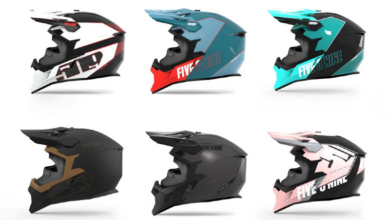A small category gaining momentum
By Neil Pascale
Editor
It could be one of the industry’s biggest surprises of the year, not to mention a sign of the current economic challenges the United States face.
The nation’s top-selling sport bike, from July 2007 through the end of this last July, was not one of the traditional heavyweights in this arena, like Suzuki’s GSX-R or Yamaha’s YZF-R series. Instead, the Ninja 250 took those honors, according to Kawasaki Motors Corp., U.S.A.
Whether that pattern holds across the full year is still to be seen but undoubtedly the Ninja 250’s success will have manufacturers looking closer at the smaller displacement sport bike category, currently a one-horse race.
“It wouldn’t surprise us at all if somebody else comes out with a 250 becomes the (retail sales) numbers are getting large enough,” Karl Edmondson, motorcycle product manager for Kawasaki Motors Corp., U.S.A., said of his metric competitors, Suzuki, Yamaha and Honda.
Besides the popularity, which isn’t exactly an overnight occurrence, the rising price of the market’s only 250cc option, the Ninja, also figures to play a role in the competition’s decision. The cost of the Ninja has risen from $2,999 in 2007 to $3,499 in 2008 and the 2009 model, which has yet to be unveiled at press time, will carry a $3,999 price tag. That higher price tag might give other manufacturers enough room for margin to build a 250cc engine that could compete with the Ninja.
“They’re not going to make money on it, like us,” Edmondson said of the possible competition, citing the difficulty in achieving a typical profit margin with the smaller displacement motorcycle. “But this isn’t a bike about making a lot of money. This is about introducing new people to motorcycling and bringing young buyers in and bringing female buyers in.”
Demographic surveys have shown that has certainly been the case so far. In 2007, 33 percent of the Ninja 250 buyers were female. Plus, the age range was fairly spread out, with 33 percent being under the age of 25 but another 44 percent being over the age of 35.
“It actually has a pretty broad appeal,” Edmondson said of the Ninja 250.
That includes the type of rider purchasing it. Most are first-time buyers — more than 60 percent in 2007 — but another 21 percent bought it as a replacement motorcycle and 17 percent purchased it as an additional bike.
“I think in 2008 we’re going to see that additional (category) go up,” Edmondson said. “I think there are a lot of guys that are buying that bike as an additional bike because it’s pretty cool.”
In fact, Kawasaki did a number of improvements on the 2008 model, including significant design enhancements as well as improvements to the 249cc parallel twin engine.
It’s also not the only 500cc-and-under sport bike that has fared well in 2008. Suzuki’s GS500F is “way up over budgeted sales,” said Glenn Hansen, the motorcycle and ATV division communications manager for American Suzuki Motor Corp.
Those better-than-expected sales for the entry-level sport bike have come without much in the way of traditional marketing. “It’s not a model that we advertise really outside maybe some promotion stuff we’ve done in dealerships talking about fuel economy,” Hansen said.
Could the low retail price, and thus little room for profit margin, of a 250cc sport bike keep Suzuki and other metric manufacturers away from seriously considering adding it to a future-year model lineup?
“There could be some of that,” Hansen said, “but we sell less-expensive vehicles with kids ATVs and dirt bikes.”
Another factor could be competition from new entry OEMs that could have the technology to produce these lower-displacement engines.
“Certainly when we have a new product to offer we look at the complete competitive framework, no matter who is building it,” Hansen said. “We see how ours might fit. Can we price it competitively? Will the dealers accept it and order enough and promote it along with us? So yes, we do look at all competitive models, absolutely.”
Even with a stellar 2008, the smaller-displacement sport bike class figures not to be a one-hit wonder.
Edmondson of Kawasaki said the Ninja 250 retail sales have grown in double digit percentage in almost every year since 1999.
“The gas prices maybe had a big impact on this,” he said of this year’s retail sales growth, “but it’s been going up, up in sales before the gas prices were an issue.
“Had we not restyled that bike and updated it, I don’t think we would be seeing the numbers that we’re seeing.”

